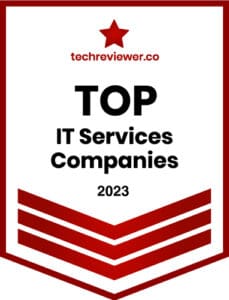Cloud migration offers numerous benefits for all kinds of businesses. Migration enables company associates to work outside the office, which is increasingly essential in today’s work environment. It’s also cost-effective, allowing companies to choose from a software suite instead of purchasing programs one by one. Migration does, however, present certain security risks, so here we assess these risks and how security monitoring can help mitigate them.
Cloud Migration Risks and How Security Monitoring Can Help
Data Loss
When moving large amounts of company data from one location to another, there’s always an inherent risk that some of it may be lost. Many of us have experienced this with something as simple as transferring a file from a computer onto a USB flash drive. Cloud migration presents additional challenges due to technical issues or simple human error, leading to data being lost, corrupted, or incomplete.
As part of your company’s security monitoring strategy, ensure that your content security policy (CSP) has adequate data backup and restoration options. In addition, it’s a good idea to back your data up using more than one cloud service to avoid any downtime if there are issues with one of the providers. Finally, it’s advisable to keep regularly updated physical backups offsite.
Misconfiguration
Users must specify configurations during cloud migration, and the wrong configurations leave your company vulnerable. This can result from malicious intent but is often just the result of human error. Misconfiguration can, for example, open the door to unrestricted inbound and outbound ports. Good security measures include restricting ports that are not necessary or strictly limiting access to authorized personnel only.
Misconfiguration also presents risks by allowing access to non-secure ports and Internet Control Message Protocol (ICMP). The key to defending against these is having the proper security monitoring tools in place. Two good examples of these are secure configuration management programs and network monitoring tools that can scan your network for any suspicious activity, such as a malicious person trying to exploit a misconfiguration during your migration.
Insecure APIs
In basic terms, an application programming interface (API) allows computers and software programs to communicate. As a communication bridge, this is a crucial target point for cybercriminals. Some examples include the prevalent use of open-source software. Another cause is the use of APIs that were created without authentication, which leaves your company’s data wide open to anyone on the internet.
One way to prevent insecure APIs is to ensure they are designed with authentication, encryption, and access control. They should also use standard API frameworks that are designed with adequate security, such as the Open Cloud Computing Interface (OCCI) and the Cloud Infrastructure Management Interface (CIMI). It’s also important that security teams have visibility and access to company systems to identify risks and respond quickly.
Ransomware
Ransomware is malware that a malicious actor uses to block access to your company systems until you pay a ransom, typically using cryptocurrency. While ransomware has traditionally targeted on-prem storage, cloud storage is still vulnerable to this type of attack. An attack can cause a company to suffer significant data and financial losses. The first step in protecting against this threat is understanding how to measure your company’s risk and exposure to ransomware attacks.
A good security option is to employ cloud malware analysis tools, which scan for potential malware. One of the best ways to prevent ransomware attacks is by educating company associates on recognizing things like malware-infected email attachments and phishing scams. In general, the best way to protect your company against malware attacks is to regularly conduct cybersecurity risk assessments and keep team members up to date on best practices.
Insider Threats
In addition to external threats such as ransomware attacks, security risks can also come from inside your company. Some of these result from espionage or individuals seeking to gain financial benefit from malicious activity. But just as often, this internal security threat comes from basic human error during the data migration process. Understandably, most company associates are not updated on the latest security measures to protect cloud data.
Common mistakes include weak passwords and a lack of encryption, which allow cybercriminals easy access to your system. To address this, most companies employ identity and access management (IAM) and conditional access that essentially limits access to what team members need to do their jobs. Along with focusing on education to help associates practice good security habits, effective IAM will minimize risk and limit damage in the event of an attack.
Legal and Compliance Issues
Because cloud data is inherently accessible, increasing government regulation concerning data protection is increasing. These regulations apply to cloud service providers, but companies must also take specific measures to ensure they comply with their end. Requirements can be particularly stringent in sensitive industries such as healthcare, finance, and government agencies.
Migrating to a cloud environment can introduce a new set of security requirements. Companies should have measures in place to ensure they comply with these both during and after the migration process. Failure to do so can result in heavy fines and significant damage to a company’s reputation in the event of an attack.
Trying to Migrate Everything
This is another common mistake that can expose companies to unnecessary risk. In short, it’s a good idea to assess all programs and operations to determine if they will benefit from being on the cloud. If there are functions that won’t help, consider keeping them in-house. This is particularly relevant for data that is sensitive or differentiates you from competitors.
Migrating company operations to the cloud offers significant benefits such as increased productivity and cost reduction. There are some security risks associated with this process, but understanding these risks is the first step toward putting the proper measures in place to protect your company’s valuable data and system integrity. Contact Edafio Technology Partners to learn more about conducting a safe and secure migration to the cloud and their cyber/cloud security bundles offerings to help reduce risk.








